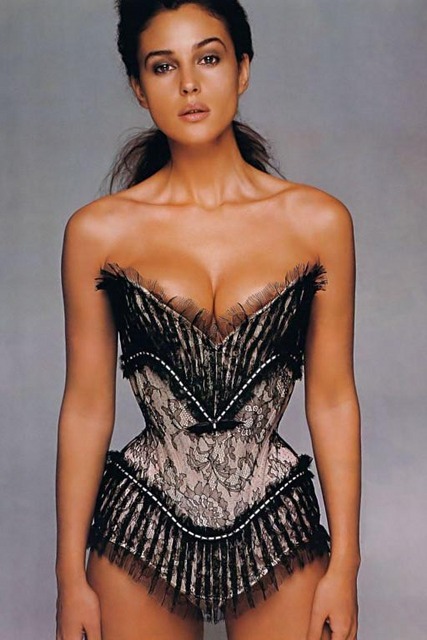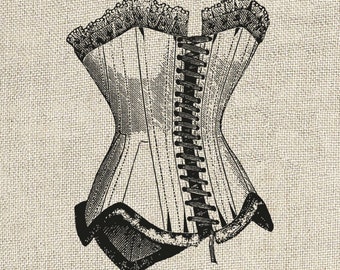Cincher Corset Biography
Every few years, some (usually) deluded soul tries to persuade the newspapers or the courts that he’s a direct descendant of some dead member of the Royal Family or other — invariably from the wrong side of the blanket.
Little wonder, then, that no one paid much attention when Nick Locock took to the law in 2004. Once and for all, he said, he wanted to prove that he was the great-grandson of Princess Louise, the most beautiful — and least conventional — of Queen Victoria’s five daughters.
His claim seemed unlikely, to say the least. If the as yet unmarried princess had indeed given birth secretly to his grandfather, Henry, he was asking us to believe that Queen Victoria — the moral guardian of her era — had colluded to wipe the record clean.
After that, Nick maintained, Henry’s DNA could conceivably be compared with an existing DNA sample from one of Queen Victoria’s granddaughters. The courts, however, turned down his application, citing ‘the sanctity of Christian burial’.
This left Locock both disappointed and bemused. ‘I wouldn’t mind so much if the very same church hadn’t recently moved about 200 bodies to make way for a coffee shop,’ he said.
And there it all rested, until author Lucinda Hawksley began working on a biography of the lovely Louise — a woman so far ahead of her time that she became a respected sculptor and campaigner for women’s rights.
Like all researchers into the Royal Family, Hawksley applied to visit the royal archives at Windsor. To her surprise, she was told that Princess Louise’s files were ‘closed’ to the public.
Next, she tried several times to get access to the archives of Louise’s husband’s family — the Argylls — at Inveraray, Scotland, but again she was firmly rebuffed.
Stranger still, she ran against the same brick wall when she asked to see papers connected to people Louise had known — from fellow artists to servants and friends.
And Hawksley wasn’t the only one who wondered what was going on. The archivists she approached at the National Gallery, the Royal Academy and the Victoria & Albert Museum, as well as at various overseas collections in Malta, Bermuda and Canada, were frankly bemused to discover that all the papers she’d requested had been ‘removed’ to Windsor.
By then, Hawksley was all the more determined to get to the bottom of this most tantalising of royal mysteries.
Why, she wanted to know, had the detailed records of the most popular of Victoria’s daughters been locked away in the archives? What was it about her that was deemed too scandalous or dangerous to be revealed?
Fortunately, enough clues remained to untangle Louise’s remarkable story. Victoria made no secret of the fact that she was disappointed in her children. As babies, they bored and even revolted her; as children, they were dressed up like dolls to be formally presented to her a few times a day.
By the time her sixth child and fourth daughter, Louise, came along, the Queen had all but lost interest. For the most part, the tall, flaxen-haired child was either belittled or ignored — a misfortune that evidently marked her deeply.
She reacted by often misbehaving, which led the Queen to dismiss her frequently in her letters and diaries as ‘backward’, ‘difficult’, ‘awkward’, ‘naughty’ or ‘rebellious’.
The legacy of this treatment was that Louise throughout her life had a desperate longing to be noticed.
And, at 18, when she flowered into the type of curvaceous, regular-featured, blue-eyed beauty most admired by Victorian men, she was indeed noticed. But was she also seduced?
Lieutenant Walter George Stirling, of the Horse Artillery, had been hired in March 1866 as the latest tutor for her delicate younger brother, Leopold, who was a haemophiliac.
An important addition to the Royal Household, Stirling also joined various family outings, parties and dinners. Leopold blossomed under his care, and there was certainly no sign that Victoria was anything but pleased with the handsome young officer.
Louise, meanwhile, was spending a great deal of time with both her brother and his tutor. So it came as a shock when Stirling was abruptly dismissed from his post just four months later.
The official explanation was that the Queen had decided Leopold needed a tutor more used to dealing with ‘persons of delicate health’.
But this makes little sense, as the boy was promptly placed in the care of a notoriously brutal servant, who regularly abused the prince — extremely dangerous for a child at risk of bleeding to death.
Read more: http://www.dailymail.co.uk/news/article-2508123/The-Mystery-Princess-Louise-Queen-Victorias-daughter-secret-love-Royal-sex-scandal.html#ixzz3Krhxosvb
Follow us: @MailOnline on Twitter | DailyMail on FacebookSo why did Victoria sack Stirling? What we do know is that, shocked at her precipitate action, two of the Queen’s senior advisers — who knew that Stirling was a man of great qualities — suggested she give him an alternative job training another of her sons, Prince Arthur, for the Army. But although Stirling would have been ideal for the job, she refused.
It wasn’t long before the entire Royal Household was in a ferment of gossip about his abrupt departure. But the persistent rumour that he’d actually made Louise pregnant emerged only a year or two later.
Surely, you’d think, someone would have noticed the Princess’s expanding girth? Possibly, but the fashions of the time conspired to make baby bumps all but invisible.
Louise would also have had recourse to one of the special boned corsets for expectant mothers, which were tightly laced to create as small a waist as possible. Muffs and shawls also helped hide a tell-tale bump, as did the fashion for frills, pleats, padding and decoration.
Normally, Louise avoided all of these and, intriguingly, there are many references in 1866 to the fact that her dresses were suddenly highly decorated with ribbons, bows and pleats.
How could the Princess have hidden her pregnancy from her dresser?
Simple: as Victoria herself noted in her diary for autumn 1866, Louise, at this date, did not require servants to help her dress.
She certainly wasn’t her usual self in 1866. That July, Louise wrote to a girlfriend that she was feeling ‘low and sad’. The letter went on: ‘[I] sit in my room and cry. I cannot write and tell you why, there are so many things ought not to be as they are . . . I am expected to agree with them and yet I cannot when I know a thing to be wrong.’
It’s also notable that Louise made few public appearances in the winter of 1866 — and that, when she did, she rarely left her carriage.
Read more: http://www.dailymail.co.uk/news/article-2508123/The-Mystery-Princess-Louise-Queen-Victorias-daughter-secret-love-Royal-sex-scandal.html#ixzz3Kri2DH00
Follow us: @MailOnline on Twitter | DailyMail on Facebook
Cincher Corset Corset Piercing tops Dress Wedding Dresses Training Before and After Prom Dresses Tattoo Photos
Cincher Corset Corset Piercing tops Dress Wedding Dresses Training Before and After Prom Dresses Tattoo Photos
Cincher Corset Corset Piercing tops Dress Wedding Dresses Training Before and After Prom Dresses Tattoo Photos
Cincher Corset Corset Piercing tops Dress Wedding Dresses Training Before and After Prom Dresses Tattoo Photos
Cincher Corset Corset Piercing tops Dress Wedding Dresses Training Before and After Prom Dresses Tattoo Photos
Cincher Corset Corset Piercing tops Dress Wedding Dresses Training Before and After Prom Dresses Tattoo Photos
Cincher Corset Corset Piercing tops Dress Wedding Dresses Training Before and After Prom Dresses Tattoo Photos
Cincher Corset Corset Piercing tops Dress Wedding Dresses Training Before and After Prom Dresses Tattoo Photos
Cincher Corset Corset Piercing tops Dress Wedding Dresses Training Before and After Prom Dresses Tattoo Photos
Cincher Corset Corset Piercing tops Dress Wedding Dresses Training Before and After Prom Dresses Tattoo Photos
Cincher Corset Corset Piercing tops Dress Wedding Dresses Training Before and After Prom Dresses Tattoo Photos










